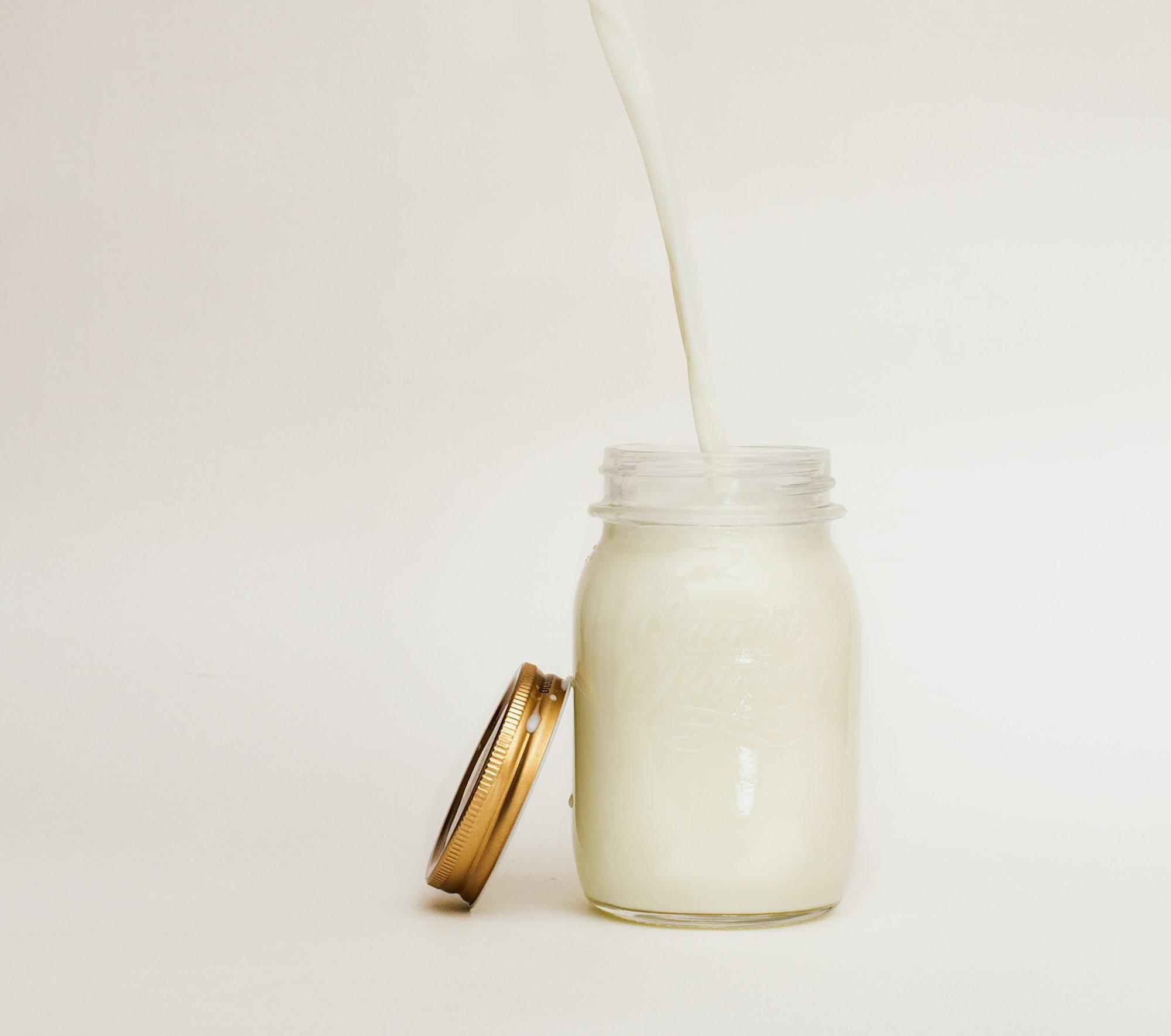The dairy debate is real. Endless chatter about milk products’ pros and cons is confusing enough. Not to mention the issue of dairy allergies, intolerances, and sensitivities. Is your latte bringing on bloat? Is your go-to Greek yogurt the culprit behind those stubborn zits? Maybe yes, maybe no. Before you ban dairy from your diet, it’s a good idea to get a sense of how it can affect the body. Below, we break down the science on dairy allergies, intolerances, and sensitivities, explaining how they differ and what you can do to diminish dairy-related discomfort. Moo-ving right along…
What is a dairy allergy?
This just in: some 32 million Americans reportedly suffer from food allergies, so they’re kind of a big deal. When you think of food allergies, think of the immune system. Food allergies are mediated by an abnormal immune response. This means the body recognizes a harmless protein in certain foods (like dairy) as dangerous. As a result, the body produces antibodies to fight off the “foreign” material and releases chemicals that bring on allergic reactions.
Good to know: dairy is among the eight most common allergens, which also include peanuts, tree nuts, shellfish, fin fish, wheat, eggs, and soy. While there’s no cure for food allergies, they can subside. Dairy allergies are also more likely to resolve during childhood compared to other types of food allergies, according to FARE.
There are two main types of proteins in dairy: casein and whey. Individuals with dairy allergies can be allergic to one or both of these proteins. Casein is the solid portion of milk that curdles, while whey is the liquid portion of milk.
In general, food allergies can bring on a wide range of signs and symptoms. Mild reactions may include itchiness in the mouth, hives, swelling, or nausea, while more severe reactions may include vomiting, diarrhea, life threatening drops in blood pressure, and anaphylaxis, AKA severe narrowing of the airways.
What is a dairy intolerance?
When you think of food intolerances in general, think of the digestive system. Food intolerances are associated with difficulty digesting and absorbing certain foods.
There are a handful of potential causes of food intolerances. In the case of dairy, one common cause is a lack of the enzyme (lactase) needed to digest a natural sugar that occurs in milk (lactose). The body therefore experiences lactose intolerance, also known as lactose malabsorption. The result? Lactose-containing products (think: cheese, milk, yogurt, ice cream) don’t get broken down or absorbed by the body. Instead, they hang out in the colon and wreak havoc on the GI tract. Cue the bloating, gas, cramping, and diarrhea.
What is a dairy sensitivity?
There’s actually no standard definition of a food sensitivity; it’s basically any adverse response to a food that doesn’t fall into the food allergy or food intolerance bucket, per Harvard Medical School. There’s no clear consensus on what exactly occurs in the body to spark food sensitivities, however common reactions can include joint and stomach pain, brain fog, and rashes. Individuals with a dairy sensitivity may be able to tolerate certain amounts of dairy sans symptoms, while those with a dairy allergy are required to avoid all milk products.
How can I tell if I have a dairy allergy, dairy intolerance, or sensitivity?
The best approach is to meet with your doctor or an RD as soon as you start feeling funky after eating dairy. Remember, allergies can be life-threatening, so do not delay seeking professional help!
Here’s the lowdown on diagnoses. Your doctor or an allergist can run tests to determine if a dairy allergy may be at play. Blood and breath tests are often used to check for lactose intolerance. While food sensitivity tests are available (and increasingly popular), there isn’t enough research to support their accuracy quite yet. According to the Academy of Nutrition and Dietetics, food sensitivity tests tend to look for a type of antibody called IgG. The catch? Research shows IgG has not been linked to food sensitivities and most people produce it after eating food no matter what.
It’s important to know if you truly have a dairy allergy, intolerance, or sensitivity before you give up on milk products, since cutting any major food group out of the diet can mean missing out on critical nutrients. Thanks but no thanks.
Does Everyone Benefit From Cutting Out Dairy?
Contrary to what some Instagram influencers may tell you, ditching dairy will not automatically clear up your skin and beat bloat if you don’t have a dairy allergy, intolerance, or sensitivity (sorry, we wish it was that easy too).
If you do test positive for a cow’s milk allergy, you’ll need to remove all dairy products from your diet. Fortunately there are tons of tasty dairy-free alternatives, like coconut yogurt. If you suffer from lactose intolerance, you’ll also want to limit milk products and take digestive enzymes when you eat dairy to help with symptom control.
If you suspect you have a food sensitivity, we recommend working with an RD who can help guide you through food journaling and an elimination diet. Elimination diets systematically remove and then reintroduce different food groups one at a time to determine what foods might prompt symptoms. Heads up: elimination diets require careful planning and commitment — simply cutting out yogurt for five days isn’t enough to establish whether or not you have a dairy sensitivity. For more info on the process, check out the University of Wisconsin-Madison’s guide to all things elimination diets.
Sources of Dairy
The obvious: cow’s milk, yogurt, kefir, cheese, ice cream, butter, sour cream, half-and-half, margarine, and chocolate.
The not so obvious: protein powders, milk powder, and ingredients with the prefix “lact” like lactate, artificial butter and cheese flavors.
The Bottom Line on Dairy Allergies, Intolerance, and Sensitivity
Dairy doesn’t sit well with everyone. If you suspect your a.m. parfait or kale caesar are causing you discomfort, seek professional help stat. If an allergy or intolerance is in fact present, ditching dairy could potentially make all the difference for skin, gut, and immune health.
We recommend working with an RD to make sure you find healthy alternatives that meet your nutrient needs. That said, there’s little need to cut out cow’s milk products if you don’t experience adverse reactions to them. Dairy is a stellar source of protein and calcium, a critical nutrient for women prone to bone density loss later in life.
Want more nutrition facts? Follow Culina Health on Instagram for evidence-based info you can trust, or schedule a session with one of our registered dietitians.






